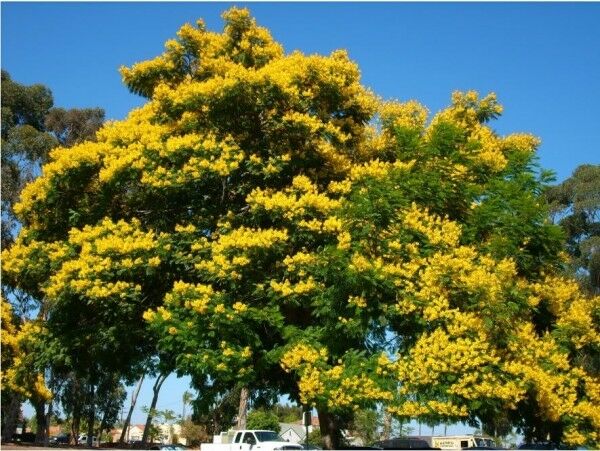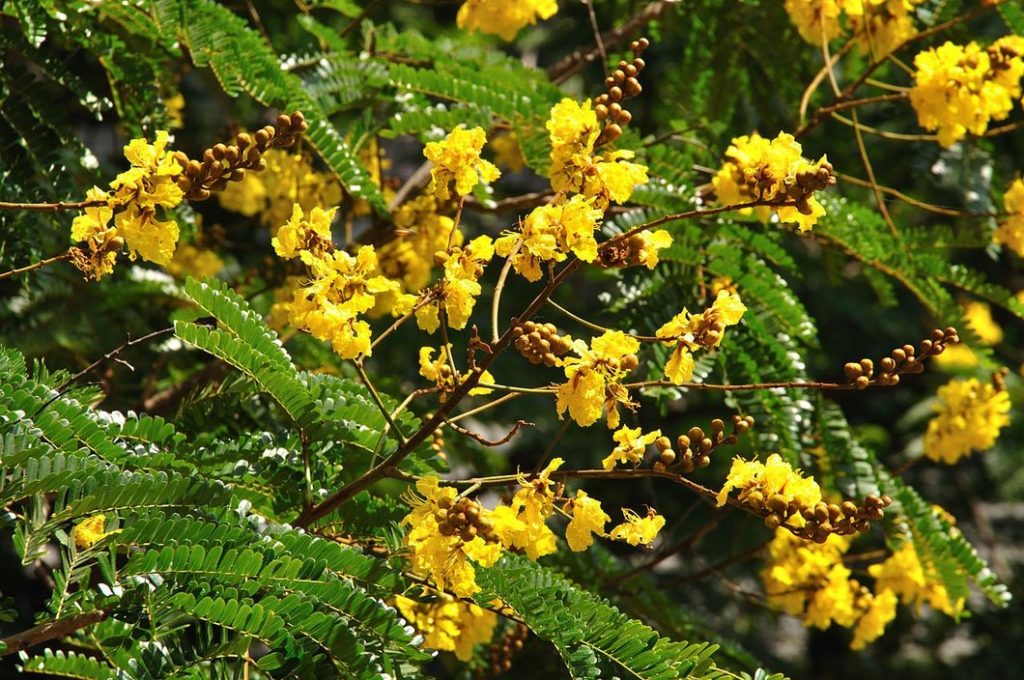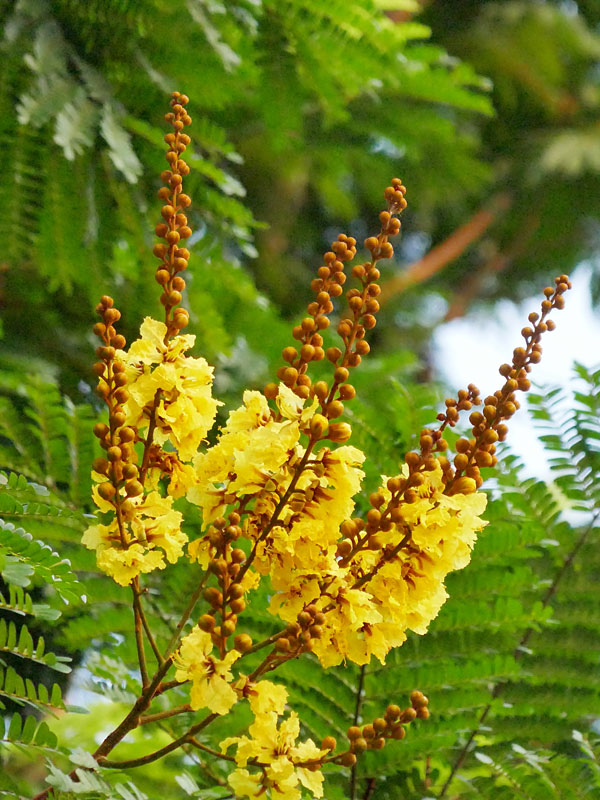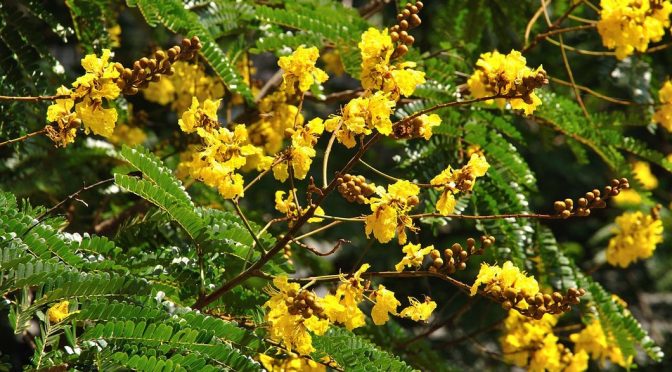Peltophorum pterocarpum is a fast-growing evergreen tree with a dense, spreading, umbrella-shaped crown. It usually reaches a height of 15 – 24 metres, although it has been known to reach 50 metres. The straight, cylindrical bole is sometimes buttressed, it can be 50 – 100cm in diameter. The tree is harvested from the wild for local use as a medicine and source of materials. It can be grown as a hedge and is also planted as a pioneer species for restoring native woodland. A very beautiful and elegant ornamental tree, it is widely cultivated, both for ornament and shade, throughout its natural range, and also in many other areas of the tropics. The beautiful golden-yellow flowers may be used as cut flowers.
The bark contains tannins. In traditional medicine it is used as an astringent to cure or relieve intestinal disorders after pain at childbirth, sprains, bruises and swelling or as a lotion for eye troubles, muscular pains and sores. It is also used for gargles and tooth powders. An antifungal principle is present in the leaflets and buds. The flowers contain a flavanone glycoside pigment, naringenin 7-glucoside. An alcoholic extract from the flowers has an anti-inflammatory effect and an antibacterial activity.
The bark furnishes a yellowish brown dye, which serves the dyeing of cotton and batik products. The bark has been an important component of the dark or black ‘soga’ dye in Java (where it is mixed with the bark of Ceriops tagal, the wood of Maclura cochinchinensis and other ingredients), which is used for batik work. The dye, derived from the heart wood, is applied in the textile industry.



